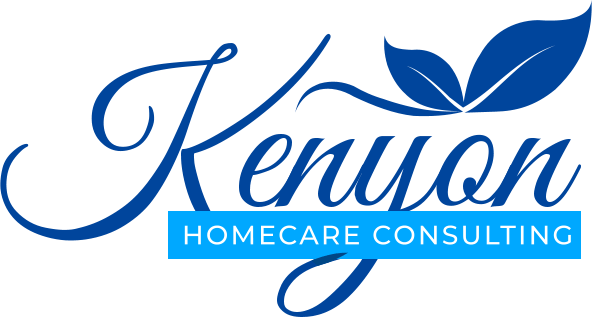Kenyon Connects
LEGISLATION REFORM

For those of you who have been in home health for decades, the idea of competition between agencies revolved around how to get market share. You did marketing, developed relationships, maintained visibility in your communities and gave good care. With the nationwide expansion of Value Based Purchasing, competition has a whole new meaning to our industry. Let's look into the expansion. CMS began the original VBP project in 9 states on January 1st, 2016. It had 3 basic reasons listed for the project: Provide incentives for better quality care with greater efficiency; Study new potential quality and efficiency measures for appropriateness in the home health setting; and Enhance the current public reporting process. The goal was to show that quality scores could improve while there was a potential for significant savings to the Medicare program in dollars. The program showed that VBP did just that. CMS reports savings of $141 million annually with improvement of quality scores by 4.6% in those states originally involved. By this, it should be no surprise to our industry that CMS announced a nationwide expansion. CMS started the pre-implementation this year and has offered education to agencies to prepare for the full implementation on January 1, 2023. Agencies will see that payment rates will change beginning in 2025 based upon the performance numbers in 2023. You can register for the next scheduled CMS training entitled Navigating Performance Feedback Reports: Interim Performance Report (IPR) and Annual Performance Report (APR) which is scheduled for August 25th at 2pm ET. CMS also has many of the pervious recordings of trainings available for you here , so you can utilize the education and sign up for the listserv associated with Home Health Value Based Purchasing. The expanded Home Health Value Based Purchasing Model is set to base reimbursement on your performance in relation to other agencies like yours. It will look at certain quality measures each calendar year. Your OASIS, HHCAHPS surveys, and designated claims measures will calculate performance. An agency can expect between a -5% to 5% change in Medicare fee for service payments. So, what all this means for your agency is that you are not just competing for market share but for maximum reimbursement too. Agencies that do not perform will be hit for another loss to overall dollars. This could mean a transition of agencies no longer looking to provide Medicare services. It will be anticipated that certain agencies will not do well in the HHVBP model and not survive. The good news is that agencies focused on quality measures and patient satisfaction will thrive in HHVBP. Agencies need to keep the focus on Oasis accuracy, acute care hospitalization, and ER visits without hospitalization. Should you need consulting for your agency, Kenyon Homecare Consulting has senior level consultants with comprehensive knowledge and experience within the industry to help you navigate your clinical, operational, and financial needs. Call us today at 206-721-5091 or contact us online to see how we can help you succeed!

When the Home Health Value Based Purchasing Model (HHVBP) was introduced in 2016, it was clear that CMS was hoping for the same successes achieved in other similar demonstrations across other healthcare venues. Now, after years of being in place and statistically significant data available, CMS is looking to expand this model into all states and all agencies. What does that mean for our industry? Background Of Home Health Value-Based Purchasing : As CMS considered this type of model, there were several goals in mind. First was to provide incentives to agencies for better quality of care and greater efficiency in doing so. The next goal was a deeper dive into new quality measures applicable to the home health setting. And finally, HHVBP would enhance public reporting. The point would ultimately be to improve quality to Medicare beneficiaries without increasing spending. Now, we fast forward to 2021. After years of collecting data, CMS determined that in the 9 states participating, there was an increase of 4.6 percent to quality scores and an an average annual saving to Medicare of $141 million . Based upon this information, CMS released the certification from its Chief Actuary regarding the expansion and the statistical significance in savings to the Medicare program. Let's look at the expansion proposed rule and what changes will come from it. What Does The 2022 Expansion Look Like For Providers: Although the model is moving forward, it is not without some regulatory changes and here are the main ones in the proposed rule : Modification of quality measures: The goal in this is to look at decreasing some of the burden put on providers in the Home Health Quality Reporting Program and focus more on patient outcomes. It does include 2 additional quality measures that deal with promotion of care coordination. Under Executive Order 13985 given on 1/20/2021, the outcome is to better monitor patient outcomes in diverse populations. CMS is looking to focus on health equity in these diverse populations. CMS wants feedback on how to accomplish this through policy changes/ solutions. It is looking at better reporting on dual eligible beneficiaries, disability status, the LGBTQ+ community, religious minorities, and those dealing with ongoing poverty or inequality. Routine updates on home health and home infusion payment rates: CMS looks to adjust PDGM case mix, co-morbidities and functional levels. The one items that looks to remain the same are the LUPA thresholds. There does not appear to be an adjustment from 2021 to 2022 in this category. Updates to the Medicare Conditions of Participation: During the COVID-19 pandemic, CMS issued certain waivers that it is looking to make permanent. The first is the home health aide supervision waiver and the second is the ability for the occupational therapist to continue to complete the initial and comprehensive assessments for patients. The ultimate outcome if enacted is an additional $310 million dollars in reimbursement to home health agencies in calendar year 2022. This is the continued shift in healthcare dollars being moved from inpatient care to home and community based services. Should you need assistance in helping your agency become clinically efficient and outcome based while fiscally sound, please call Kenyon Homecare Consulting at 206-721-5091. Whether you call directly or contact us online , we will put you in touch with a senior associate to help you reach your clinical and financial goals.

On September 20, 2020, CMS updated the COVID-19 Emergency Declaration Blanket Waivers for Health Care Providers that dates back to its initiation in March of this year. The waivers add flexibility for agencies as we deal with the health emergency in our states. Our individual states have seen downswings and upswings in infection rates and it affects our ability to provide care to our patients. Making sure you know and understand the waivers can make the difference in providing care to your patients and keeping your staff at work. What’s Happening With Your Staff? Just like the rest of the world, your staff is dealing with the effects of virtual learning and quarantines that affect the needs of them to stay home with children. Staff has also dealt with their own COVID illnesses and family members affected. So, let’s say you currently have 3 nurses in your agency who now (and suddenly) have to stay home to home school kids and can’t leave to make visits. In a small agency, 3 nurses out of commission is huge. So, the waivers allowed by CMS keeps you in compliance with caring for your patients while utilizing virtual visits and supervision. Let’s look at some of the waivers. Extending Oasis Timeframes: The 5 day completion is extended to 30 days while the 30-day submission is currently waived during the pandemic. HHA On-Site Supervision Waived: While virtual supervision is encouraged during this time, an RN doesn’t have to go on site to complete the every 2-week supervision requirement for home health or hospice. Therapy Disciplines Can Complete Initial/ Comprehensive Assessments: This allows agencies to utilize these disciplines to do these assessments even when nursing is involved/ordered. They are not able to complete initial or comprehensive in nursing only cases, but this gives some flexibility to nursing staff. 12-Hour Annual HHA In-service Training: This allows your training to be postponed until the end of the first full quarter after the end of the pandemic. Ultimately, this is so your RNs who teach are allowed to focus on direct patient care. Annual On-Site Evaluations Of HHA: These now do not have to be completed until 60 days after the expiration of the pandemic health emergency. Hospice Aide Competency Testing: The requirement waived is that competency must be completed on an actual patient in the home. Now, it can be done on a pseudo-patient. The speed in which competency testing improves under this waiver allows aides to begin seeing patients sooner. Now, we’ve only discussed a portion of the waivers, but if you are that agency with 3 nurses out of the picture due to COVID or your patient census has greatly increased, it is a game changer. Many agencies have continued most operations as usual, but waivers helps to decrease exposure and cost. If you are unsure of all the waivers that may help alleviate the pressure on your agency, then make sure to review them on the CMS site. At Kenyon Homecare Consulting, we want to help agencies provide high-quality care to patients. Call us today at 206-721-5091 or contact us online to see how we can help you be the best at what you do!from a different source.

From a different source. When the Medicare COP changed in 2018, it was assumed that the industry fell in line with regulation changes. However, as a national consulting agency, Kenyon Homecare Consulting found this untrue. There seem to be agencies that misunderstood the regulation changes or misread what the changes were. Here, we will highlight some of the changes that still seem to be missing in agencies today and why it will hurt you at survey. Patient Rights: Under the Medicare COP, it is required that the patient receive a written copy of the schedule of care, medications, pertinent instructions, care plan, and contact information for the clinical manager. The COP also requires an individualized Emergency Preparedness Plan. Reality is that some of these items have been a part of the Medicare COP prior to the changes, but without enforcement of the rule. This is no longer the case. So, here are the frequent items we see when entering an agency: Medications: The list of medications has not been provided to the patient or it is not written terms understood by the patient. Many lists still contain abbreviations such as BID, QD, or PO. These terms that are recognizable within the medical industry are not known to the patients we serve. Schedule Of Care: Surveyors ask to see the schedule of care that was provided to the patient while doing in-home visits. Many agencies have not committed to the operational changes for clinical staff to get the schedule of visits in the hands of the patient. It is required that the patient is aware of when the disciplines will be in the home. As changes happen, you must inform the patient and document that it was done. In addition, we see that the month of admission may be on a calendar in the home, but the subsequent months are missing. Use your EMR to give reminders to clinical staff to update the next month of visits as appropriate. Copy Of The Care Plan: This is still missing for many agencies. The patient has the right to see and know exactly what is on the individualized care plan. Surveyors will ask to see these things. We often hear from agencies that a copy of the care plan was given after admit, but the patient threw it away or that it was lost by the patient. We recognize these things happen. However, understand that your surveyor will expect that all clinical staff understand the regulation and procedure within your agency as to how your comply with this patient right. Another issue is that only the admission care plan is provided. As changes occur, the patient is to receive an updated copy. This is not happening in many agencies. Emergency Preparedness: This is still a huge deficiency for many agencies. Many times, we are consulted after surveys when the agencies have already received deficiencies. Now, they are in a crunch to fix what is broken prior to the surveyor returning to reassess the plan of correction. This requires education and operational changes ASAP. The reality is that many had a “plan”, but it was not completed with a hazard vulnerability assessment or with any education to staff. Many agencies had components of the plan but missed any memorandum of understanding with supporting agencies. It is not uncommon that there was no real process to determine surge or re-evaluate it. These are all issues when it comes to survey time. There must be yearly evaluation and re-evaluation as necessary for your plan. the employees must be educated yearly and as needed. Drills need done routinely and employees need to know how to address mass communication methods when the needs arise. Many agencies will initiate a mass texting drill with low percentage of employee contact back. However, no changes were made to improve that or educate employees who did not respond to the drill. The issue lies in doing nothing with the data you receive from the drills. Agencies are often not yet a part of community disaster drilling and this is important if it is done in your area. Let Us Help Be Your Path To Compliance: If you find yourself behind the eight ball with survey coming, then let’s get the education and interventions in place to allow for compliance before you are hit with deficiency. Need help writing, updating, drilling, or educating staff on the emergency preparedness plan? If so, then we can help. Call Kenyon Homecare Consulting today at 206-721-5091 or contact us online to see how we can become your headquarters for compliance. If you need an updated manual that has all the changes present, you can purchase the online manual and edit the items specific to your agency. This will help you begin your process instead of working from behind with something outdated.
